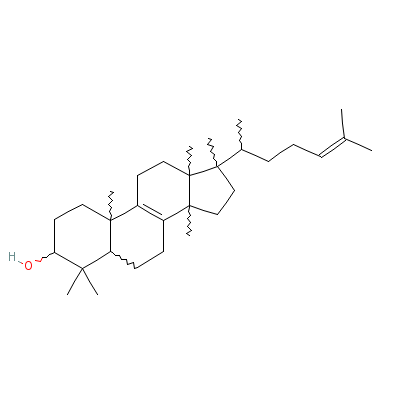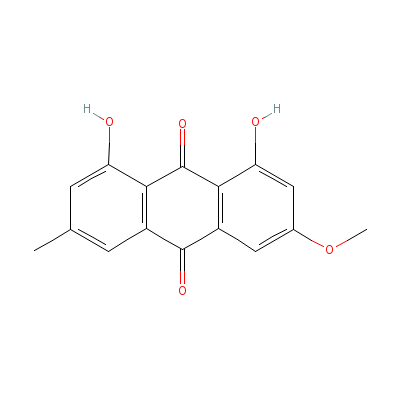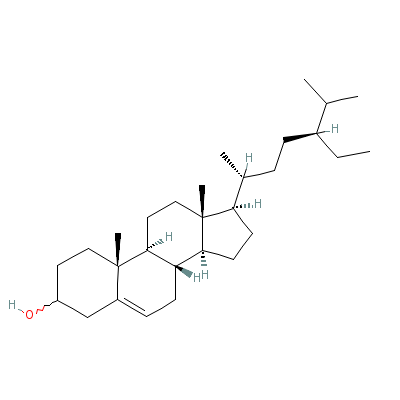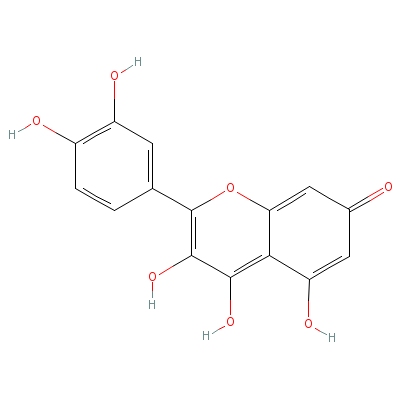Lannea coromandelica (Houtt.) Merrill |
| |
|
|
Botanical Name |
: |
Lannea coromandelica (Houtt.) Merrill |
English
Name |
: |
Indian Ash Tree |
Synonym(s) |
: |
Lannea grandis Engl., Odina wodier Roxb. |
Family |
: |
Anacardiaceae |
| |
General Info
| Description |
 |
|
A moderate-sized to large deciduous tree with spreading crown and stout branches, attaining a height up to 24 m. Bark grey or whitish, smooth, exfoliating in irregular rounded plates; leaves imparipinnate, 25-45 cm. long, crowded at the ends of branches: leaflets 7-9, oblong-ovate, 7.5-15 cm x 2.5-5 cm.; flowers small, yellowish or purplish, unisexual: male fascicled, in slender compound racemes female in simple pubescent racemes; fruit red, compressed, reniform, 1-seeded. |
| Herb Effects |
 |
|
Stimulates the cardiovascular and central nervous systems, hypothermic and anticancer (leaf and stem bark); astringent, acrid (bark); antibacterial (plant). |
Chemistry
| Active Ingredients |
 |
|
Lanosterol (heartwood); DL-epi-catechin, (+)-leucocyanidin, physcion, physcion anthranol B and beta-sitosterol (bark); quercetin and ellagic acid (leaf and flower); chuytyl ferulate (root). |
| Chemistry
of Active Ingredients |
 |
|
|
 |
Name |
CAS# |
IUPAC Name |
Formula |
Structure |
 |
|
| Lanosterol |
Not Available |
17-(1,5-dimethylhex-
4-enyl)-4,4,10,13,14
,17-hexamethyl-2,3,4
,5,6,7,10,
11,12,13
,14,15,16,17-tetrade
cahydro-1H-cyclopent
a[a]phenanthren-3-ol |
C31H52O |

|
| (+)-Leucocyanidin |
69256-15-1 |
(2R,3R,4R)-2-(3,4-di
hydroxyphenyl)chroma
n-3,4,5,7-tetrol |
C15H14O7 |
-Leucocyanidin.gif)
|
| Physcion |
521-61-9 |
1,8-dihydroxy-3-meth
oxy-6-methyl-anthrac
ene-9,10-dione |
C16H12O5 |

|
| beta-Sitosterol |
5779-62-4 |
17-(5-ethyl-6-methyl
-heptan-2-yl)-10,13-
dimethyl-2,3,4,7,8,9
,11,12,14,
15,16,17
-dodecahydro-1H-cycl
openta[a]phenanthren
-3-ol |
C29H50O |

|
| Quercetin |
Not Available |
2-(3,4-dihydroxyphen
yl)-3,4,5-trihydroxy
-chromen-7-one |
C15H10O7 |

|
| Ellagic acid |
Not Available |
Not Available |
C14H6O8 |

|
|
Pharmacology
| Medicinal Use |
 |
|
Indigestion, toothache and debility (bark decoction); sprains and body aches (leaf); as a lotion for bruises, wounds, sores, and ulcers (due to leprosy) (bark); in asthma and as a cordial to women during lactation (gum); in sprains and bruises, local swellings, pains of body and in elephantiasis (boiled leaf) |
| Reference |
 |
|
 Chandel et al., Biodiversity in Medicinal and Aromatic Plants in India. Chandel et al., Biodiversity in Medicinal and Aromatic Plants in India.
Uniyal et al., Medicinal Flora of Garhwal Himalayas. |
Dealers
Products
|
|